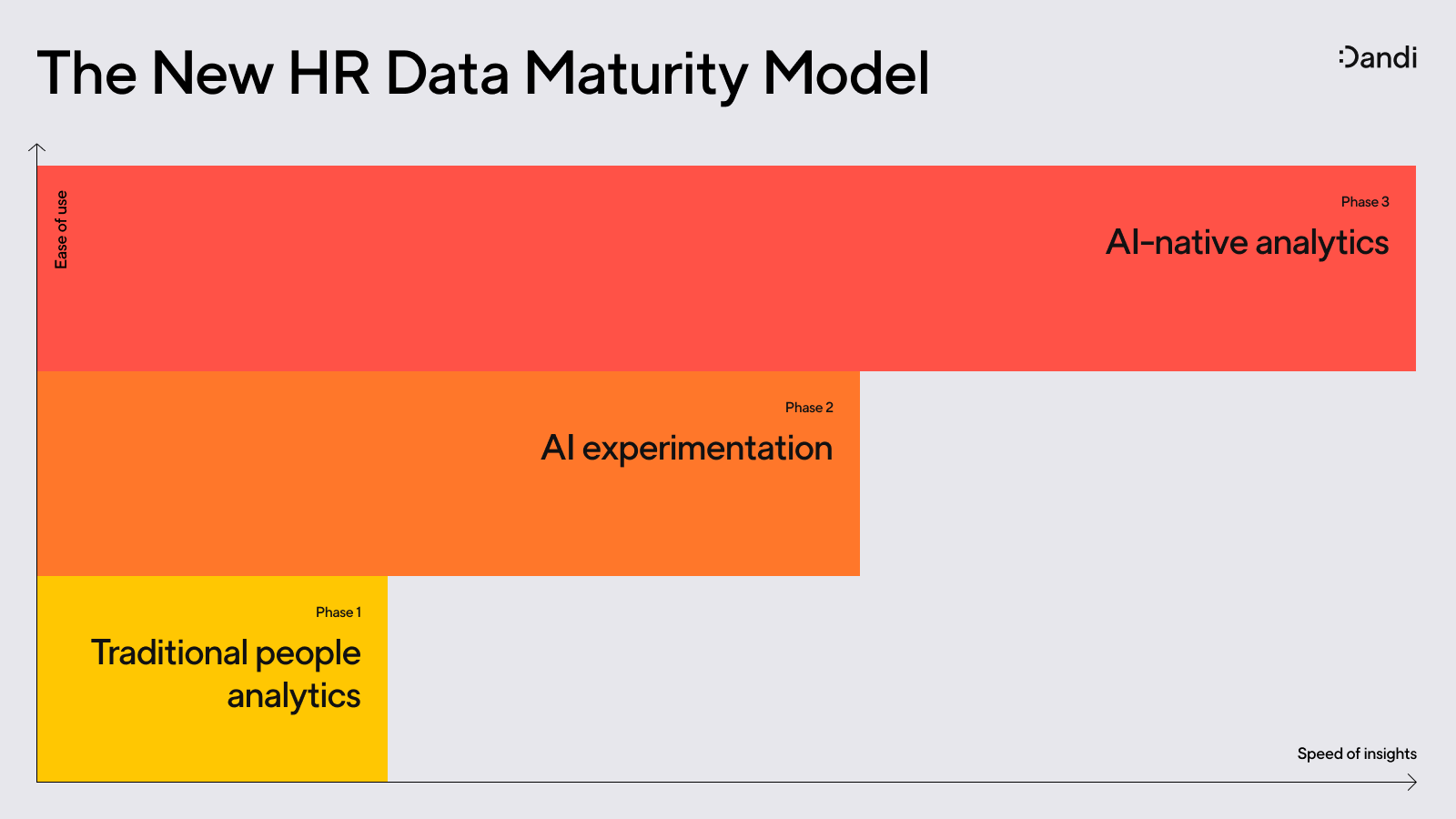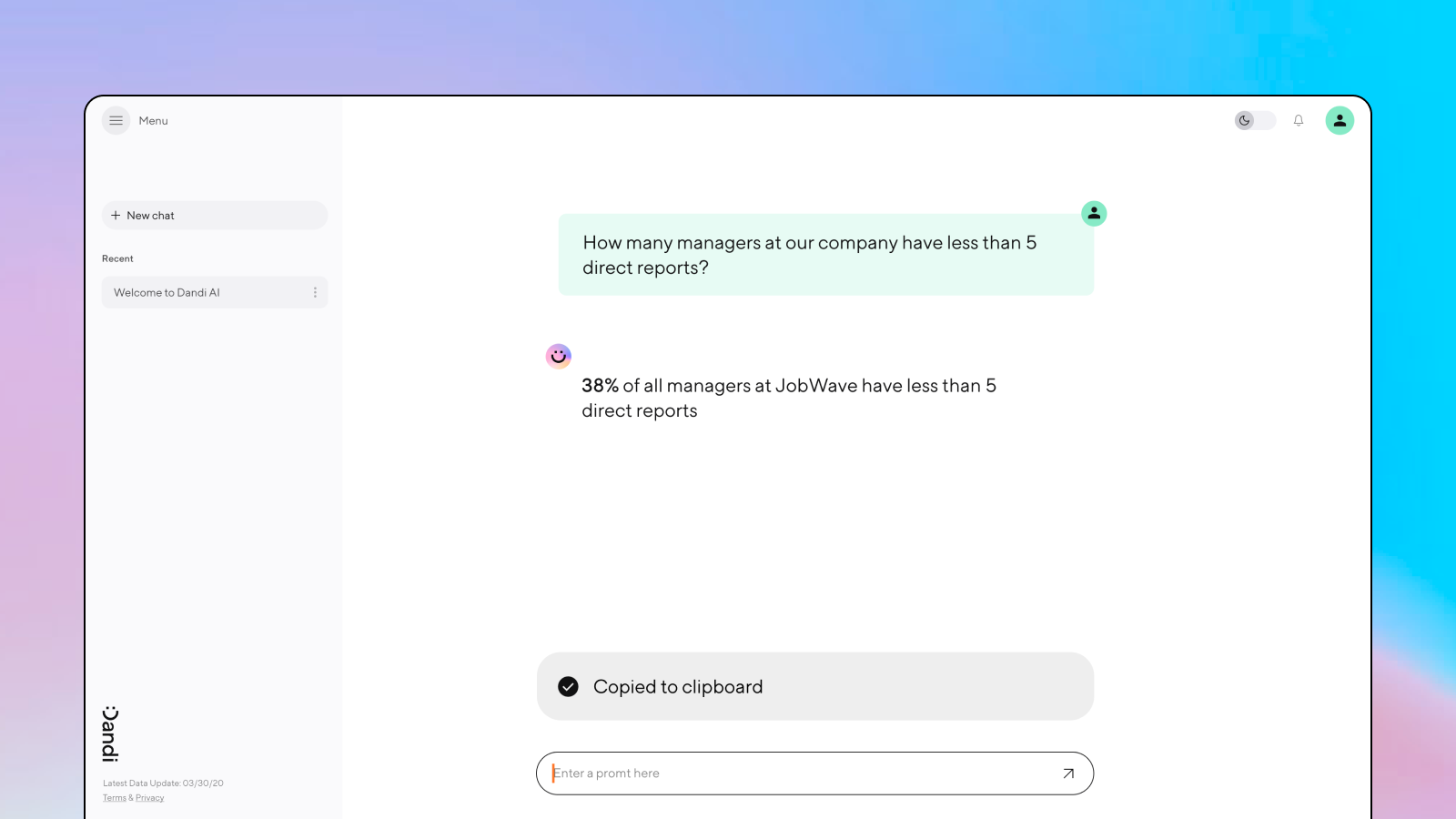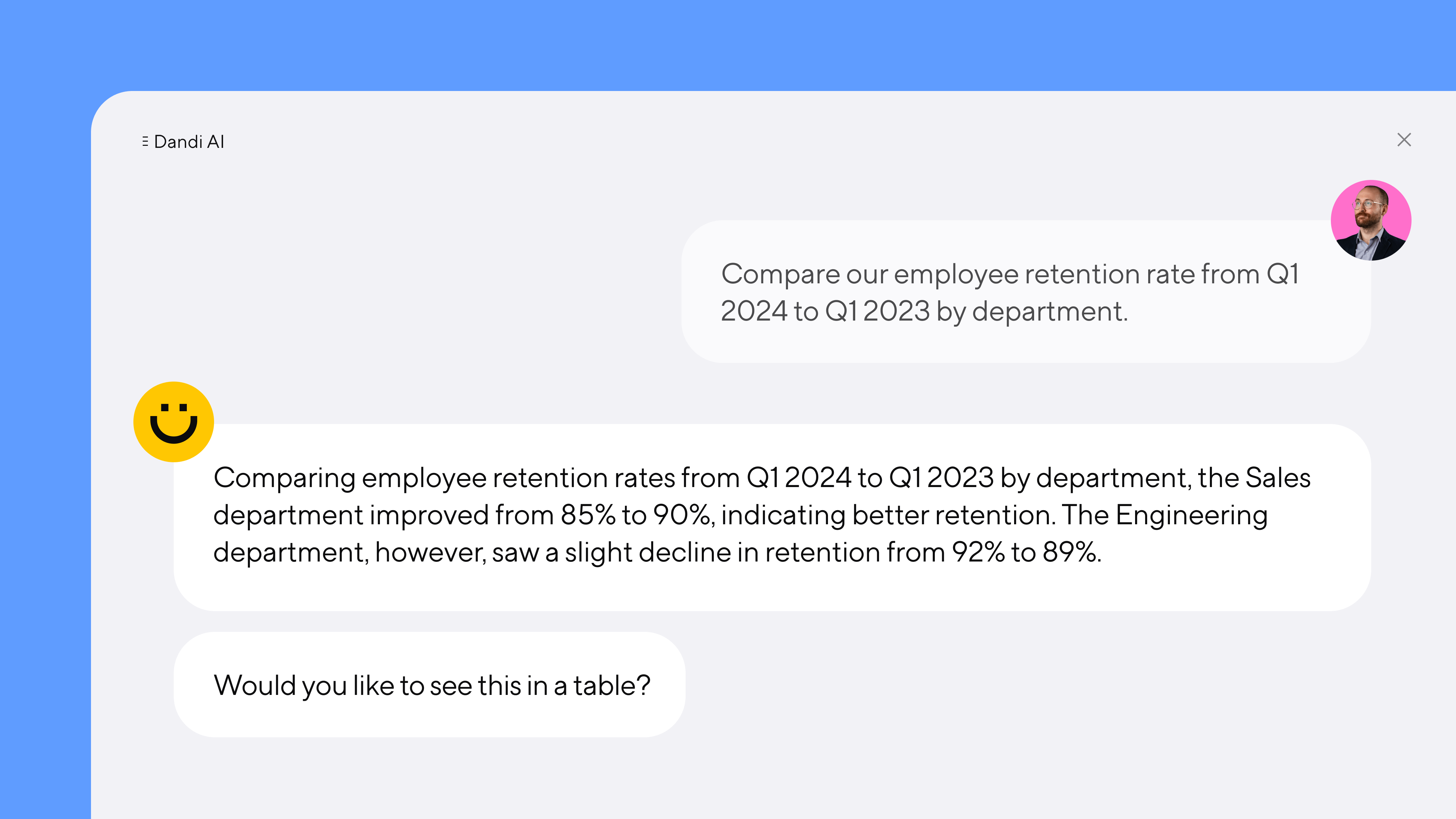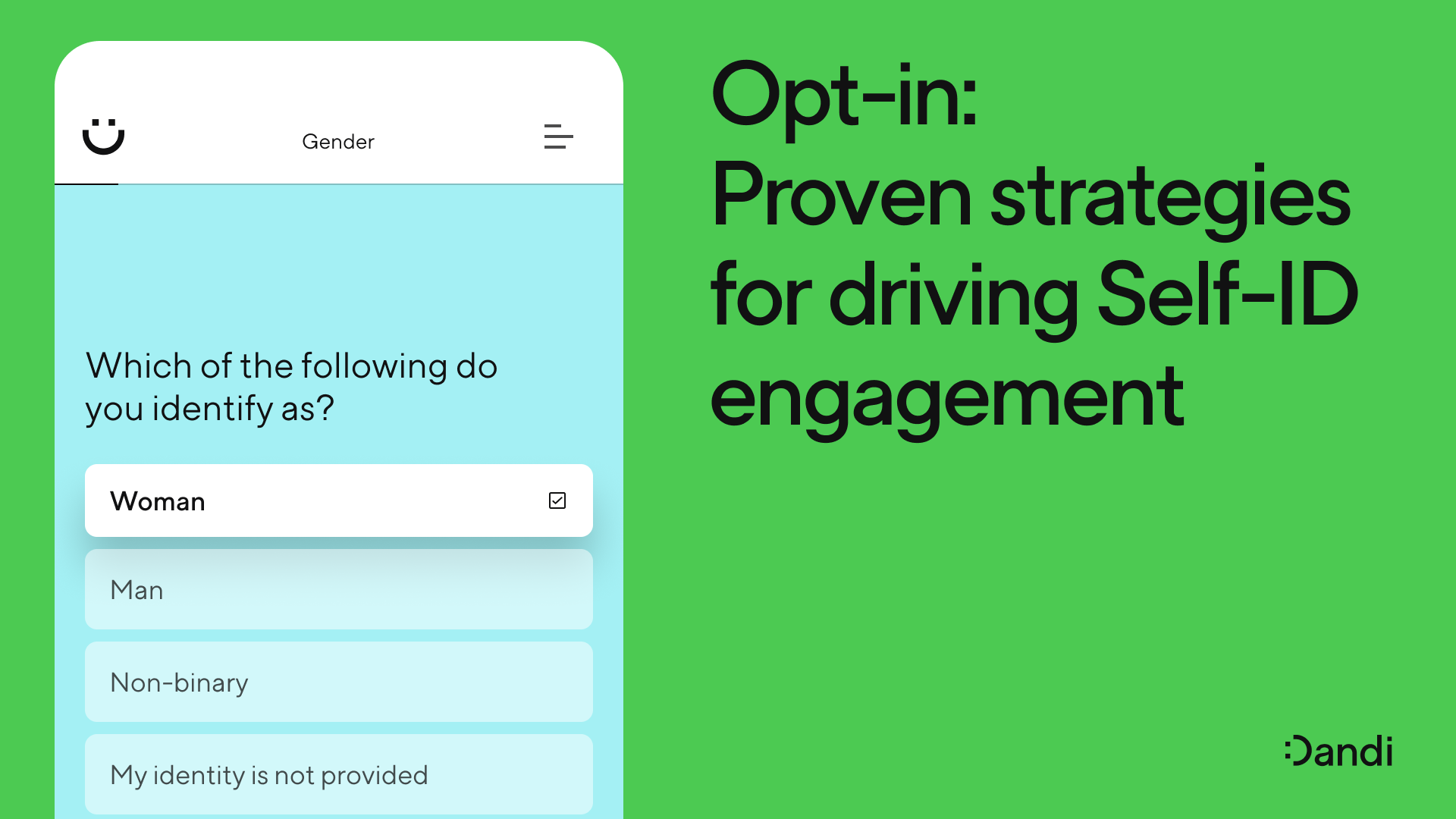What’s next for DEI?
Catherine Tansey – Sep 20th, 2023
The overturn of affirmative action is the latest event in a roller coaster three years for DEI professionals. This week, Dandi explores the challenges—and opportunities—for DEI teams in a post-affirmative action world.

The Supreme Court of the U.S. (SCOTUS) dealt an undeniable blow to efforts to advance a more just and equitable society by recently banning affirmative action (AA) in American universities.
Now many DEI professionals—already reeling from a rollercoaster 3 years, and no doubt aware of the increasing backlash against “woke” workplace programs like DEI—are wondering what comes next.
Below we look at the court’s decision, examine its impact on the workplace, and offer actionable steps companies can take to fortify their DEI strategies.
The workplace implications of AA’s ban
Legally speaking, the recent ruling has no direct bearing on private employers.
SCOTUS’s decision was on affirmative action in higher education, not the workplace. The majority asserted that AA violated the Equal Protection Clause in the constitution, which is tied to Title VI of the Civil Rights Act, while DEI programming falls under Title VII of the Civil Rights Act—the challenging of which would require the overturn of two well-established precedents.
What’s more, while affirmative action in higher education involved the question of race-based admissions, most DEI strategies are based on broader, more holistic approaches to promoting diversity.
That being said—it’s an undeniably challenging time.
Legally speaking, the SCOTUS decision has no direct bearing on private employers.
“The SCOTUS ruling has created an environment where opponents of affirmative action, and by extension opponents of DEI programs, practices, and policies will feel much more empowered,” says Jason Gong, DEI Lead at Dandi.
DEI professionals are contending with yet another impossible moment: one in which they know how crucial this work is but have to answer to stakeholders and business interests that prioritize risk reduction over most else. Going forward, it will be up to DEI practitioners to develop and implement programming that walks the line between risk and action—no easy task.
DEI after affirmative action
1. Use data to drive strategy
Even before the ruling, companies had already slashed department budgets and laid off diversity team members, blaming the economic downturn.
“DEI practitioners have already been getting laid off at proportionally higher rates than other roles within organizations. Teams are being defunded and roles are not being backfilled,” says Jason. The SCOTUS ruling threatens to put a further freeze on DEI efforts.
However, it is not necessary (or advisable) to abandon DEI efforts, eliminate all mentions of race in the workplace, or curb employee resource groups. Instead, Jason recommends companies amp up advocacy. “If you are an organization that has been saying ‘DEI is critical,’ you need to start demonstrating that in a very real way,” says Jason.
Now more than ever is the moment to take action on your DEI strategy. Don’t have an employee mentorship or sponsorship program yet? Implement one. Still reaching for the same tired and broken unconscious bias training? Scrap that in favor of behavior-change based training. Using good-faith approaches instead of tracking data? Invest in an analytics platform that will make data easy to utilize, safe to share, and secure to collect.
“If you are an employer that wants to continue investing in and demonstrating a commitment to all things DEI, your approach and your strategy has to be data-driven,” says Jason.

If you are an employer that wants to continue investing in and demonstrating a commitment to all things DEI, your approach has to be data-driven.
Jason Gong DEI Lead, Dandi
This last point is key. In order to prevent DEI budgets from being tied to socio-cultural demands for change, companies need to demonstrate the need for and impact of DEI programs through hard data. While using racial data as a determinant for employee decisions is illegal, there are plenty of ways to still use data legally:
-
Collect data to identify race-related disparities in the workplace
-
Leverage racial data to construct, support, implement, and measure DEI programs
-
Prove and communicate the efficacy of DEI programs
"Companies need more nuanced data and to invest in talent and tools that can help you turn data into insights that drive action, that measure impact and progress. That's the way you can make a DEI function incredibly valuable,” he adds.
2. Expand and improve recruiting efforts
The natural corollary to university admissions, hiring practices are likely to be an area of focus post-AA. Complicating matters, companies may now face a less-diverse talent pool.
To combat this, companies should rethink recruiting efforts.
“Your recruiting process should be optimized to ensure that you’re in the position to interview, evaluate, and ultimately hire the best people for the job,” says Jason.
“Those processes should be objective and informed by structure and data that allows you to arrive at the most equitable outcomes, which, more often than not, will result in a more diverse slate of candidates—and thus a more diverse set of folks that you hire,” he adds.
Rather than continuing recruiting at the same state colleges or prestigious universities:
-
Visit colleges with a significant BIPOC presence, as well as HBCUs
-
Reach out to professional organizations for underrepresented groups, like the Society of Black Engineers, the Society of Hispanic Professional Engineers, and more
-
Turn to employee resource groups or diverse colleagues for referrals
Research shows these tailored approaches yield great results.
“Our data show that targeted recruitment programs have a significant positive effect on the diversity of managers,” write sociologists Frank Dobbin and Alexandra Kalev in their 2022 book Getting to Diversity, in which they use diversity of managers as the key metric when judging the success of DEI programs.

Think about recruiting and talent acquisition in a holistic way and embed systems and processes that will ensure that hiring decisions are made in the most objective and equitable way possible.
Jason Gong DEI Lead, Dandi
While it’s long been illegal to make hiring decisions based on race or other protected characteristic, companies should also avoid using race as a “tiebreaker,” awarding “plus points” to diverse candidates during the hiring process, or mandating a specific number or percentage of roles to members of specific identity groups, writes Lily Zheng in How to Effectively—and Legally—Use Racial Data for DEI, published in Harvard Business Review.
Instead, companies can require the final candidate pool for jobs and promotions is made up of a specific percentage of diverse candidates. Known as Mansfield’s Rule in the field of law, this stance has been widely adopted by prestigious firms in an effort to shore up diversity. Creators of Mansfield’s Rule modeled it after the NFL’s Rooney Rule, which required at least one Black candidate be interviewed for every head coach job. While neither are perfect, this approach is one way organizations can ensure more qualified individuals are being considered.
As organizations explore expanded recruiting efforts, be sure to involve managers in the process. Companies “that used line managers to recruit new team members at colleges and professional association meetings reported strong improvements in diversity,” write Dobbin and Kalev.
The authors explain that managers are “the best ambassadors,” as they can provide a better idea of what X team does than a traditional recruiter could. “Another advantage of asking company managers to recruit is that they become built-in mentors for the people they recruit,” write Dobbin and Kalev—which not only helps get more diverse employees in the doors, but makes it more likely that they will stay.
As another benefit, pulling managers into recruitment events and efforts helps avoid the “need” to have specialized DEI recruiters. “When your approach is holistic, it's not a separate line item that you can remove from the budget,” explains Jason. “Think about recruiting and talent acquisition in a holistic way and embed systems and processes that will ensure that hiring decisions are made in the most objective and equitable way possible,” he adds.
And the more holistic the process, the less able businesses are to cut it. “When you treat something as separate it’s considered an add-on and it’s not prioritized,” says Jason.
3. Audit for bias
Framing your efforts around a desire to root out bias is a smart step for organizations to take.
“Title VII of the Civil Rights Act expressly forbids companies from discriminating along the lines of race, ethnicity, gender, etc., so programs designed to ensure compliance are lawful,” says Jeff Fernandez, CEO and co-founder of Dandi.
While DEI programs may come under scrutiny or legal challenge in the future, programs that aim to eradicate bias will be harder to touch. In line with the colorblind philosophy SCOTUS referenced in their majority opinion, anti-bias efforts seek to eradicate barriers to equal opportunities.
“Most effective DEI programs use racial data to identify discriminatory barriers that are compromising fairness and meritocracy in the workplace, and to develop initiatives that remove those barriers for everyone,” writes Zheng.
Audit processes across the employee lifecycle, from recruiting and hiring to performance management systems, promotion, and pay.
Audit processes across the employee lifecycle, from recruiting and hiring to performance management systems, promotion, and pay to remove bias. Look to see that recruiting and hiring practices include the basics, like blinding resumes, but also make sure interviews follow a set format and the same questions are asked of all candidates.
Review your calibration process for performance management and ensure the information being used for decisions like pay raises and promotions is calibrated. Check mentoring programs, skills training, family leave and flexibility policies, downsizing routines, and bonus criteria for signs of bias and work to eradicate it.
Building more standardized and structured workplace processes would help reduce racial discrimination, but also recency bias, favoritism, and other harmful workplace practices that carry negative implications for all workers.
DEI programs and training remain important, but “the best strategy for addressing… biases is to implement more inclusive systems,” conclude Dobbin and Kalev.
DEI matters—now more than ever
As Justice Kentaji Brown Jackson wrote in her dissent, “Deeming race irrelevant in law does not make it so in life.”
DEI practitioners know this all too well. And though the landscape surrounding DEI has shifted once again, the work remains vital.
As always, actions speak louder than words when it comes to DEI. Now, more than ever, is the time for organizations to crystallize their DEI vision and take action to achieve it.
Looking to fuel your DEI efforts with data? Talk to Dandi.
More from the blog
Announcing more powerful Dandi data visualizations
Team Dandi - Oct 23rd, 2024
The New Maturity Model for HR Data
Catherine Tansey - Sep 5th, 2024
Buyer’s Guide: AI for HR Data
Catherine Tansey - Jul 24th, 2024
Powerful people insights, 3X faster
Team Dandi - Jun 18th, 2024
Dandi Insights: In-Person vs. Remote
Catherine Tansey - Jun 10th, 2024
Introducing Dandi AI for HR Data
Team Dandi - May 22nd, 2024
5 essential talent and development dashboards
Catherine Tansey - May 1st, 2024
The people data compliance checklist
Catherine Tansey - Apr 17th, 2024
5 essential EX dashboards
Catherine Tansey - Apr 10th, 2024
Proven strategies for boosting engagement in self-ID campaigns
Catherine Tansey - Mar 27th, 2024









